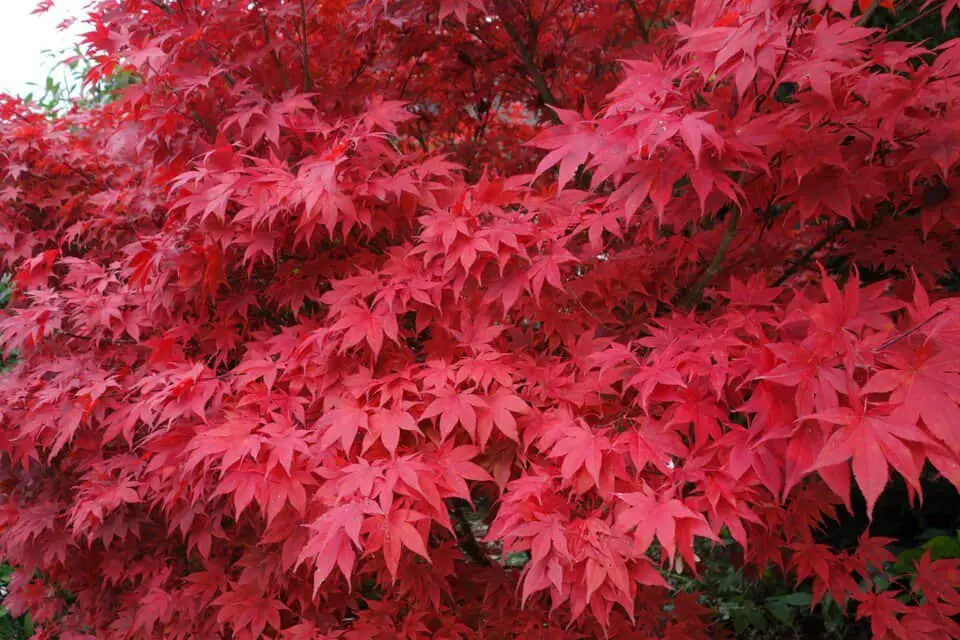Some links in the post are affiliate links and I get a commission from purchases made through some links found in the post.
When I first came across the term Bloodgood, I was taken aback. Blood? How could the name of this tree relate to blood?
Then I saw it and fell in love with just how vibrant its leaves were. And just like the name of the tree suggested, the leaves were a bright red, almost as if they were dripping in blood. Blood. And that was just in the spring.
I later learned that the sight could be bloodier (way more beautiful) in the summer when the tree took on a burgundy hue.
As the seasons continued, the redness would only get more evident, creating a sight that anyone could appreciate.
The tree branches out, creating several trunks that emanate from a single point. And as the leaves grow, they follow this branching out, forming a canopy ideal for shade or aesthetic value.
It’s just the perfect tree for any garden, with an average height of 20 feet (6 meters). But like any other tree, some conditions (or lack thereof) can result in adverse changes.
The tree could stop growing, fail to turn red in the spring, or even die. These are some of the issues gardeners face when growing this lovely deciduous species.
I will take you through what you can expect, why it happens, and what you can do about it
The common bloodgood Japanese maple tree problems are not having enough water, having too much water, the pH level is wrong, the wrong light levels and a pest infestation.
This can lead to problems with your bloodgood Japanese maple tree including browing, yellowing, root rot and wilting of the leaves.
What Are the Common Bloodgood Japanese Maple Tree Problems?
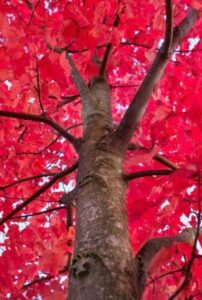 Did you know that the Bloodgood Japanese maple tree is a cultivar of the Japanese maple? Often, people think that what is good for the goose is good for the gander in this case.
Did you know that the Bloodgood Japanese maple tree is a cultivar of the Japanese maple? Often, people think that what is good for the goose is good for the gander in this case.
But that’s not the right approach to growing the Bloodgood. While it has some things in common with the Japanese maple, some of its needs are a far cry from what you would give the latter species.
That’s why it’s best to understand this specific cultivar’s needs instead of relating them to the family or genus needs.
As we go through some of the issues faced with growing this tree, you may realize that you are also guilty of generalization. Not to worry, though – you can always turn things around.
Why is Your Bloodgood Japanese Maple Not Growing?
This tree grows to a mature height of about 20 feet (6 meters) with a spread that is just as expansive. But here is the thing – it is a slow-growing tree. Thus, you cannot expect it to grow by leaps and yards, i.e., several feet, each year.
However, you should notice some considerable change in its height, and its foliage development should be top-notch to allow you to watch the color changes in the seasons. If this is not happening, you may want to consider that:
a. Your Tree Does Not Have Enough Water
For your tree to grow, it must have access to enough water, light, and nutrients, which are essential in promoting photosynthesis.
This process allows the plant to make food, giving it the energy to produce more leaves and grow taller and wider. But without water, even the presence of light and nutrients does not do the tree any favors.
If anything, the tree starts dying from the inside because the roots cannot absorb water, which causes cell shrinkage that can ultimately damage the tree. Over time, the plant’s growth stunts, and if this neglect continues for too long, the plant could die!
How much water does your Bloodgood need? Younger plants need water at least twice each week, while mature ones only need water when rainfall is insufficient to promote their growth.
When you do not meet these quotas, you notice issues such as delayed growth as well as:
- Soft and drooping leaves,
- Leaf burning on the edges,
- The loss of leaves, and
- Browning on the leaves.
Dealing with Underwatering
How can you solve this issue? It comes down to understanding how often you can water your Bloodgood and how to go about it:
1) The tree needs watering at least twice a week in its early years and once a week in its later years,
2) To water the plant, you should first check the state of the soil. If the top inches feel dry, then it needs water.
But if not, the symptoms earlier indicated relate to another issue that you should uncover and address. Sometimes, gauging the moisture levels can be difficult. You can always get a moisture gauge to help you immediately narrow down the levels.
3) If the soil is dry, the symptoms relate to underwatering, and you should water the tree slowly around its base, aiming to soak it without leaving it soggy. Overwatering is also an issue that I will cover later.
4) Allow the tree to absorb the water and check its state after a few days. In the hot months, your Bloodgood will need more water as it will absorb more to keep up with the high transpiration and evaporation rates.
Moreover, it will be in its active growing season and will take advantage of the light to make food to retain its red color. But in the colder months, the tree will hardly need water because minimal photosynthesis will occur.
After all, it sheds its leaves and goes into hibernation. You should only water the tree if the winter is dry and the soil appears dry. And even then, aim for about twice a month at most.
5) Assess the state of the soil too. The Bloodgood prefers well-draining soil that lies on the medium-texture side.
If the soil is too sandy and barely retains water, you can amend it using wood chips, pine needles, and other organic materials to help it retain more water.
But keep a distance of at least 3 inches between the mulch and the tree’s base to avoid creating an ideal home for pests.
Usually, underwatering issues arise when the Bloodgood is young and is yet to take root.
But once it establishes a strong root system, it can find ways to remain hydrated even when the summers get hot. However, you must step in when the temperatures get too high and you notice signs of underwatering.
You may also like: 6 reasons your acer tree is dying & how to fix it
b. Your Tree Has Too Much Water
As a rule, you should avoid clayey soils when it comes to the Bloodgood Japanese maple. Why? First, the tree does not like sitting in soggy soil, which creates a loophole for fungal growth in the soil.
Secondly, the leaves on this tree are highly dissected. And this results in a slow evaporation rate. Thus, if the tree sits in water, it can’t absorb enough to lose through evaporation.
The tree depends on its roots for survival, so when they suffer damage, the tree starts dying. Overwatering and root rot issues are emergencies you cannot afford to hold off.
So, besides lack of growth, what are the signs that your plant may be overwatered?
- The tree’s leaves start turning yellow – if the roots can’t absorb enough water and nutrients, the plant can’t make enough food, and chlorophyll production takes a hit,
- The leaves start falling off, and
- New shoots appear, then turn black and fall off.
Dealing with Overwatering
The tree will likely recover over time if the excess water comes from rainfall. But this would be a good time to remove the mulch so you can reduce the water retention.
However, if rainfall is not to blame, you will need to consider the following causes:
1) Giving the tree too much water
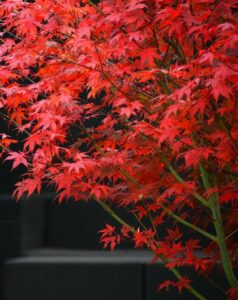
And soon enough, its roots start drowning as they cannot access enough nitrogen.
Younger Bloodgood trees need more water and should get watered at least twice a week. However, there is a caveat: you should only water the trees if the top 2 inches of the soil feel dry.
If they are moist, skip a day or two and check again. You need to assess how much water you have been feeding the tree and how this could have fueled the problem.
2) Using the wrong soil
Clayey soils hold too much water. And so does a high percentage of compost. Are you using the right soil for the Bloodgood?
Assess how long it takes for the tree to use water in the warmer months. If the water sits in the soil for too long, you need to replant the tree in a spot with a low water table. Also, ensure the soil is well-draining with a medium texture.
Always remember that fixing underwatering is always easier than fixing overwatering.
So, if you are in doubt, skip the mulch and the water and let the tree survive with the moisture it gets from the rain. Or better yet, get a moisture gauge and bid adieu to the guesswork.
c. The Soil Has the Wrong pH
Did you test the soil at the site where you planted the Bloodgood? Usually, people test the soil for nutrients. But you should also pay attention to the pH balance.
These trees thrive in neutral to slightly acidic soil conditions between 5 and 7. So, when you plant them in alkaline soils, they do not take too well to the environment.
Alkalinity triggers chlorosis, a condition in which the tree cannot make enough chlorophyll, thus hampering photosynthesis.
Moreover, such conditions make it harder for the tree to take up essential nutrients like nitrogen, phosphorus, and potassium. And without these, it cannot grow.
Symptoms of alkalinity include:
- Stunted or no growth,
- Browning of the tips of the leaves, and
- Yellowing of the leaves.
Fixing Chlorosis
First, you need to check the pH of the soil. Luckily, you can do this using a testing kit which you can get from almost any gardening store.
Does it lie within the pH range of 5 to 7? If the range is below 5, the soil may be too acidic, which also inhibits the proper growth of the Bloodgood.
And you need to amend it using alkaline materials like wood ash. But if the range is above 7, you need to acidify it using materials like coffee grounds and compost.
It’s advisable to use organic matter as it breaks down and enriches the soil.
Keep in mind that the Bloodgood needs well-draining soil. As you add materials to fix the pH issue, please think of how they will affect the drainage in the soil.
You may also like: What are the common red maple problems
d. The Tree Does Not Have Its Ideal Light Exposure
Light plays an essential role in the growth of your Bloodgood. How so? Light comprises photons that impart energy to the tree, enabling it to convert water and nutrients into food.
And that’s what gives it the energy to keep growing taller and wider. In the absence of light, photons are not available, and photosynthesis slows down.
And that can kill the tree. So, how much light does your Bloodgood need to grow?
The answer is (drumrolls). It depends! This tree is native to Asia and does best in USDA zones 5 to 8. Thus, it does not enjoy too much exposure to hot climates, nor does it have a liking for cool climates.
It prefers full to partial light exposure. And this comes down to where you live. In the higher zones, partial exposure is ideal as it prevents sunburn on the leaves.
And if you are in the lower zones with cooler climates, full sun exposure would be okay.
What happens if you expose the Bloodgood to too much sun?
- The leaves turn green in the summer, robbing you of the chance to view a deep burgundy color,
- The tree’s leaves feel hot to the touch,
- The leaves burn and turn brown, and
- The tree’s leaves wilt, unable to keep up with the vast amounts of water loss via transpiration and evaporation.
Interestingly, these issues can also arise if you place the Bloodgood under too much artificial lighting. You need to gauge the distance between the tree and the light based on wattage, lumens, and heat emission.
But what if the tree has poor access to light? In that case, you will notice that:
- The tree has a slowed growth rate,
- The soil remains wet for too long because the photosynthesis rate is slow, and the tree is not using so much water. This issue can also lead to overwatering issues, hence yellowing and dropping of the leaves.
The tree also experiences sparse growth with pale leaves, which is detrimental to its aesthetic.
Dealing with Light Issues
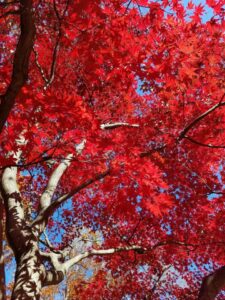 The Bloodgood does well in both full sun and partial sun exposure based on the USDA growing zone. Thus, it’s best to adhere to the following recommendations:
The Bloodgood does well in both full sun and partial sun exposure based on the USDA growing zone. Thus, it’s best to adhere to the following recommendations:
- Place the tree in partial sun/ dappled shade if you live in an area where the summers are hot. Partial sun relates to sun exposure for at least 4 hours a day – this should be the morning sun as it is less harsh than the afternoon sun rays. As such, place your tree towards the east of the garden and avoid the west.
- Position the Bloodgood in full sun if you live in a cooler climate. Full sun exposes the tree to at least 6 hours of sunlight a day, which allows it to create enough food to produce healthy leaves. You can get this exposure in the south of the garden if you live in the northern hemisphere or the north if you live in the southern hemisphere.
- If you grow the tree indoors, ensure you leave at least 8 inches between the tree and the artificial light. LEDs have less heat emission and are thus best for indoor tree growing. HIDs, while effective, have a high heat emission and can result in the bleaching of the tree’s leaves. Start slow, then build on this if you notice signs of too little light exposure.
Please note that the more light exposure the tree has, the higher the photosynthesis will be, and thus the more water the tree will need. Also, exposure to the sun increases the tree’s evaporation rates, heightening its moisture needs.
e. Your Tree Has Been Infested by Pests/ Diseases
The Bloodgood is a hardy cultivar that is relatively immune to pests and diseases. But when its immune system is weak owing to any of the above issues, it’s easy for pests to attack it.
For example, when you overwater the tree, root rot can result from fungal growth in the soil.
Some of the pests you may face are:
- Borers,
- Scale,
- Mites,
- Aphids, and
- Root weevils.
When these attack the tree, you come across changes such as:
- Holes in the leaves,
- Browning of the leaves,
- Yellowing of the leaves, and
- Premature leaf loss.
Dealing with Infestations
The best way to prevent an attack is to strengthen your tree’s immunity by offering it the right balance of water, light, and nutrients. But if pests have already attacked the plant, you can proceed by:
- Assessing the extent of the damage. If the tree is small, assessing the pest infestation should be easy. But with bigger trees, this may take a while. Observe the undersides of the leaves and look out for the signs outlined above.
- Using pesticides on the tree. For example, you will need to use an acaricide to deal with mites.
Did you know? Transplant shock can also slow your tree’s growth in the first few months. So, sometimes, waiting is the best approach.
Most of the other issues you will encounter with your Bloodgood will relate to not meeting the issues we covered under lack of growth.
Below, please find some of the other issues you might face and what causes them. Then use the sections above to help you address each problem.
You may also like: 6 benefits of a owning a Japanese maple
Why is Your Bloodgood Turning Yellow?
1) Overwatering
2) Chlorosis
3) Pest infestation
Why is Your Bloodgood Turning Brown?
1) Chlorosis
2) Overwatering
3) Underwatering
4) Too much light exposure
5) Too little light exposure
6) Pest infestations
Why is Your Bloodgood Turning Green/ Not Red?
1) Too much light exposure
Why is Your Bloodgood Losing Its Leaves?
1) Underwatering
2) Overwatering
3) Too little light exposure
Why is Your Bloodgood Wilting?
1) Underwatering
2) Too much light exposure
Final Thoughts
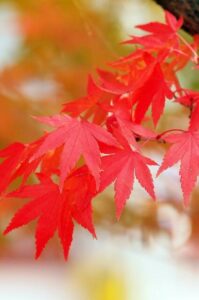 This ornamental tree is quite hardy and is often not demanding. But whenever you do not meet its basic care needs, it will not hold back on showing you how distressed it is.
This ornamental tree is quite hardy and is often not demanding. But whenever you do not meet its basic care needs, it will not hold back on showing you how distressed it is.
And sometimes, this will be by withholding its lovely red hue. You can avoid most of these issues by focusing on watering your tree, giving it enough light exposure, and feeding it when needed.
Happy Gardening!

